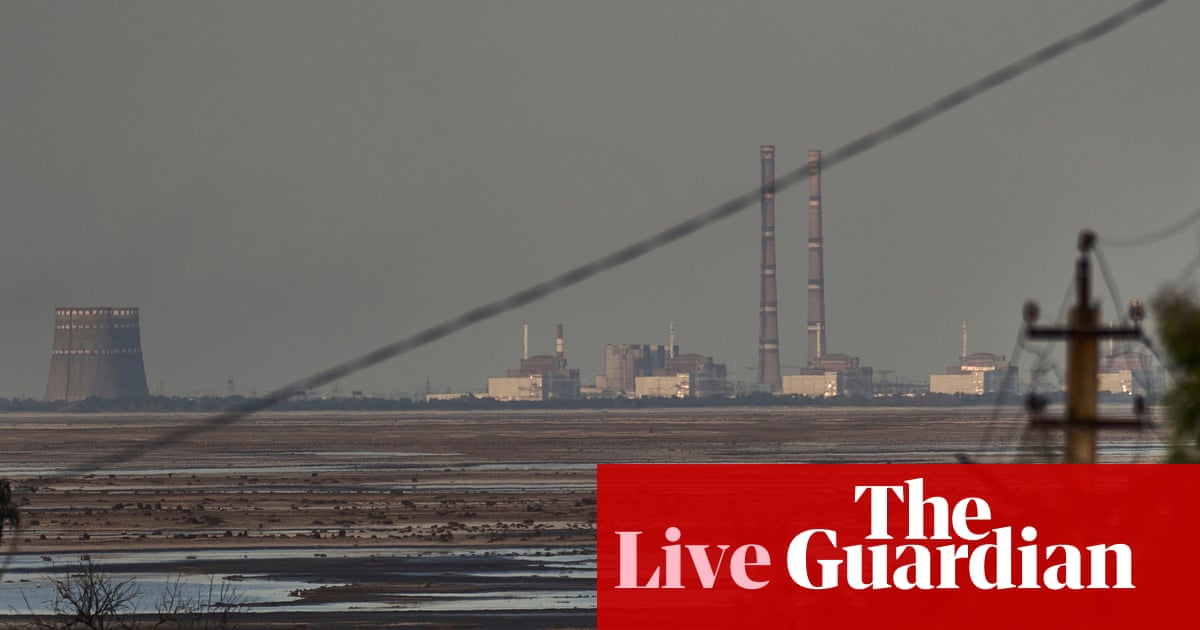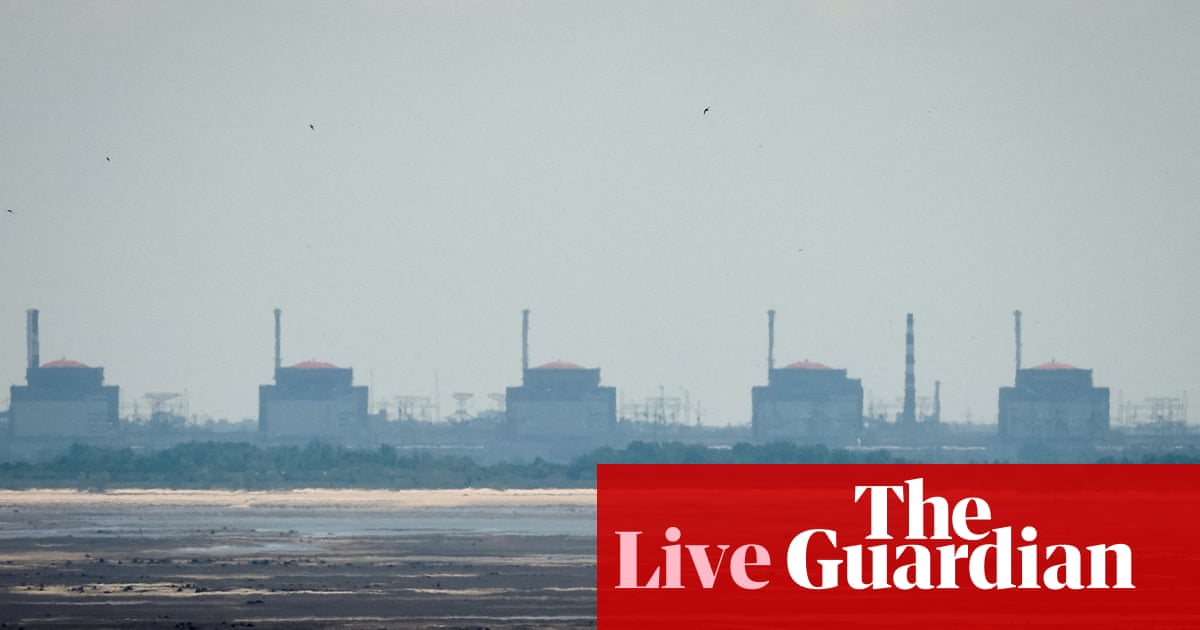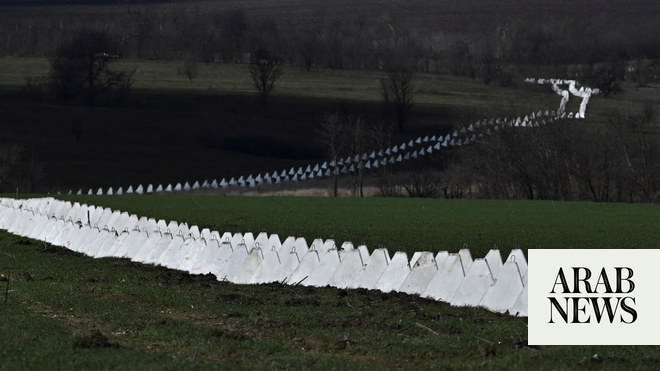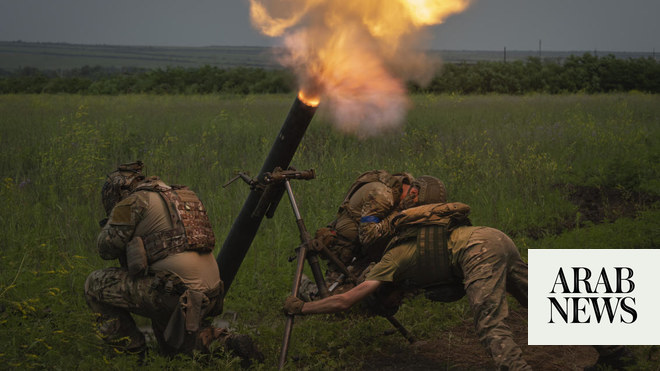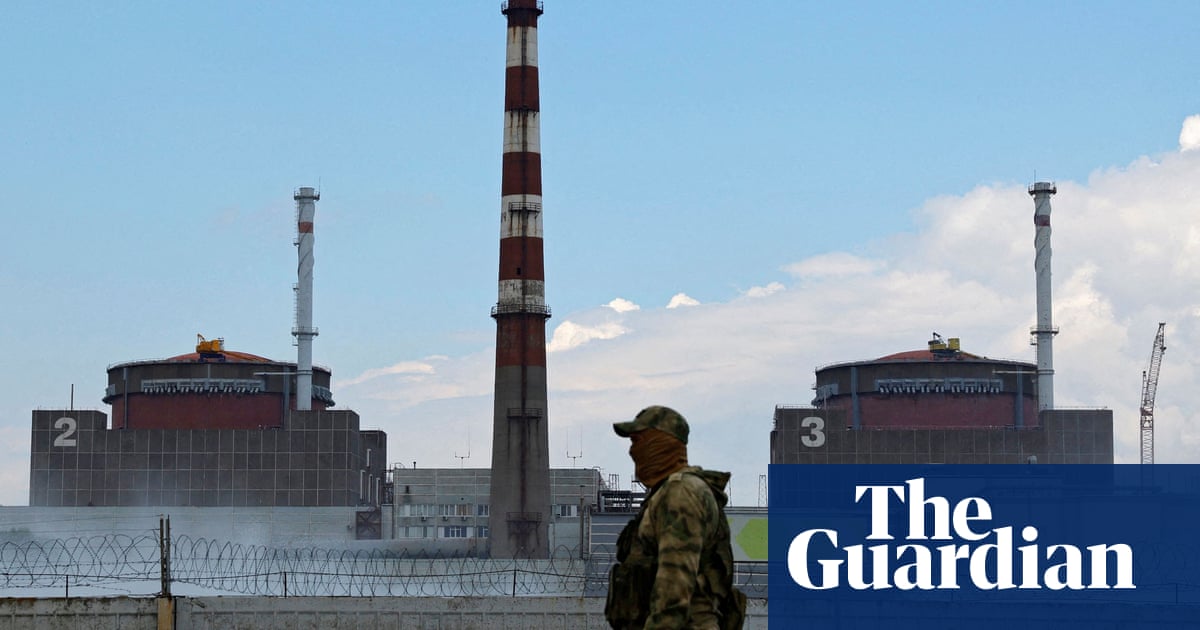
Russia and Ukraine have each accused the other of launching kamikaze drones at the Zaporizhzhia nuclear power plant in an incident condemned by the International Atomic Energy Agency for recklessly endangering safety.
The nuclear watchdog said onsite inspectors had seen the damage caused by drone detonations at three locations, including “superficial scorching” at the top of the roof of reactor 6, although it said its structural integrity was not compromised.
It is the first time the nuclear power plant, the largest in Europe, has been targeted in military action since November 2022. Captured by Russia early in the war, the plant sits directly on the frontline, within range of both sides’ militaries.
Rafael Grossi, the director general of the IAEA, described the episode as a major escalation and called for it not be repeated. “Such reckless attacks significantly increase the risk of a major nuclear accident and must cease immediately,” he said.
Responsibility was contested by the two sides in the conflict, and the IAEA did not say who it believed was responsible. Instead it described the damage, saying that at one point, while inspectors were on the roof of reactor 6, they saw Russian troops firing at what appeared to be an oncoming drone, which exploded “near the reactor building”.
Inspectors said they also saw “remnants of drones” on the roof of reactor 6 and two other locations. At a second location, a laboratory, they also observed “blood stains next to a damaged military logistics vehicle”, indicating at least one casualty.
Russia blamed the drone incident on Ukraine. “Attempts by the Ukrainian armed forces to attack the Zaporizhzhia nuclear power plant continue,” the Russians controlling the facility said. “A kamikaze drone was shot down over the plant. It fell on the roof of unit 6.”
Earlier, Ukraine said Moscow was spreading “fake” information that Kyiv had fired drones at the plant. Lt Andriy Kovalenko, the head of Ukraine’s centre for countering disinformation, said Russia was attacking the facility “with drones, pretending that the threat to the plant and nuclear safety is incoming from Ukraine”.
The nuclear plant was captured in the early stages of the two-year-long war, and despite occasional efforts to reconnect to the Russian energy grid its reactors have gradually been put into shutdown. Five out of six are in cold shutdown, where the reactors are running at a temperature below boiling point.
A sixth, reactor number four, is running in hot shutdown, primarily to produce heating for the nearby town of Enerhodar. Earlier this month, with the winter heating season concluded, the IAEA said engineers at the site were considering downgrading reactor 4 to the colder state.
Greenpeace raised concerns in March that Russia was considering restarting the reactors so they could generate electricity, an unprecedented scenario in an active war zone.






